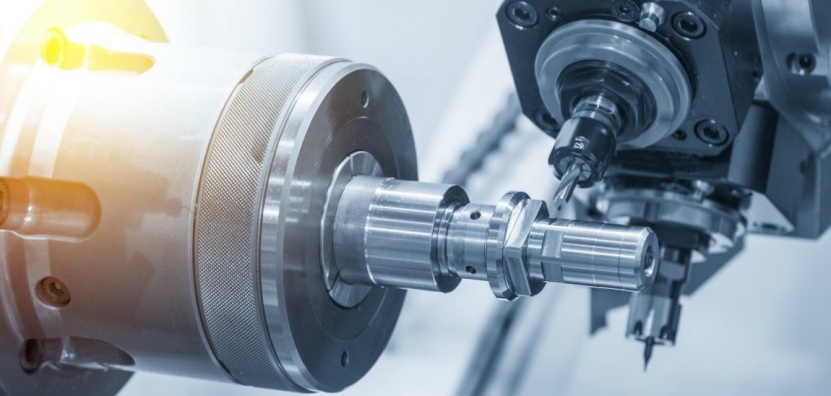Company news
Machining Basics, Part 1: What Is Precision Machining?

Is Precision Machining is a lost art? Not at Inverse Solutions. Precision machining remains an essential service utilized in creating parts, components of many tools and items we use and depend on in everyday life. In fact, precision machining supports technology where visionary companies are supporting advanced efficiencies on older technology and also creating hardware supporting the very latest developments in technology. But what exactly is precision machining? Here we take a closer look at what precision machining is and how it is utilized to support advances in modern manufacturing.
What Is Precision Machining?
Precision machining is a type of technical manufacturing that is essential in creating and designing machines, parts, tools, and other hardware that are essential in modern manufacturing to maintain process controls and tolerances that function under extremely tight specifications. It is used to make up the many large and small objects and their components that we use in everyday life. If an object is made up of many small parts, these will often need to be made with precision machining to ensure they fit together precisely and function properly. Precision Machining can be defined as utilizing the highest function of a tool, program, engineering talent or equipment thus pushing the limits of design feature creation and materials science and performing these operations under the tightest tolerances defined by any sub-set of these manufacturing parameters. Obviously, precision machining has evolved over time, and advancements in all related technologies help push the limits that define precision machining and improve performance consistently. The real art in precision machining comes with the marriage of computer controlled design and human engineered design for the creation of unique features and highly controlled output and functionality driven by advancements in fluid dynamics, chemical control, mechanical, climate extremes and durability required in modern hardware technologies. Precision machining is particularly important to create tools and parts in a way that is precise, stable, and can be repeated with consistency, accuracy, and durability.
What Is Precision Machining Used For?
Precision machining is a subtractive process used in cases where material needs to be removed from a raw product to create the finished product. Precision machining can be used to create a wide variety of products, items, and parts for any number of different objects and materials. These parts usually require tight tolerances variation from nominal dimensions and from part to part, which means that there is not much room for error in the production of the piece. Repeatability and well-controlled tolerances are hallmarks of precision machining.
Components, parts and finished durable products that are designed to maintain extremely tight tolerance margins and a high degree of durability are essential and common drivers for utilization of precision machining. For example, parts that need to work together as part of a machine may need to always align within a certain margin of 0.01mm to 0.05mm. Precision engineering and machining help to ensure these parts can not only be made precisely but can be produced with this level of accuracy over and over again.
Another common application for precision engineering may be when tools or components need repair or restoration. After being used for some time, the tools or components of an object may need machine calibration, grooving or welding to restore them to their original state. This can also be done by precision machining.
How Does Precision Machining Work?
Precision machining is a subtractive process where custom software, engineered tools, and process steps are utilized with raw material such as plastic, ceramic, metal or composites to create desired fine-featured products. Precision machining often follows the instructions given by computer aided design (CAD) and computer aided manufacturing (CAM) programs. These programs and the blueprints enhance the ability to meet tight tolerances. While most designs end up as engineered and computer aided designs, many start out as hand drawn sketches in the initial phases.
What Tools And Materials Are Used For Precision Machining?
Precision machining can be used with a number of raw starter materials including (but not limited to) plastic, ceramic, metal, composites, steel, bronze, graphite, and glass. In order to make precise cuts and intricate removal of the raw material, a combination of tools may be used. These tools vary depending on the raw material. Frequently used tools include milling machines, lathes, Electric Discharging Machine (aka. EDM’s), saws, and grinders. Most commonly used manufacturing equipment is computer controlled heavy machinery that is designed and utilized to remove substrate material creating finely detailed components and piece parts. In some cases, even high-speed robotics and photochemical processes may be used to achieve the desired result for the final product.
Precision machining is an essential process for creating both large and small items and parts according to strict manufacturing guidelines specifications and critical tolerances. For more information on precision machining and how it can benefit your business, get in touch with Inverse Solutions, the Bay Area’s machining expert.
RELATED NEWS
LATEST NEWS
Contact
CONTACT USName: Linda Wang
Mobile:+86-13923762587
Tel:86-(755)-82596641
Email:linda-cnc@xl-mfg.com
Add:Liancheng Industrial Park,No.16 Shangliao Industrial Road,Shajing Baoan District,Shenzhen City,Guangdong, China